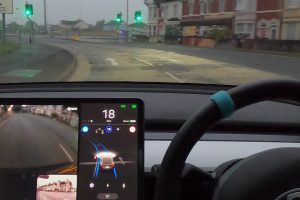- 💰 Tesla opened its Superchargers to drivers of Ford Mustang Mach-E and F-150 Lightning electric vehicles.
- 🔌 Similar partnerships were struck with General Motors and other automakers in North America.
- 📈 AutoForecast Solutions estimates Tesla could generate $6 billion to $12 billion in annual charging revenue by 2030 from non-Tesla EV drivers.
- 🚗 Tesla’s strategy shift to collaborate with other automakers marks a departure from its previous exclusivity approach.
- 💡 Despite potential loss of customers, Tesla’s brand loyalty is expected to remain strong.
- 🏛️ Opening up charging network also allows Tesla to access federal funds under President Biden’s Inflation Reduction Act.
- 🧩 Interoperability testing and legal considerations were essential in establishing partnerships like the one with Ford.
In a groundbreaking move, Tesla has decided to open its Superchargers to drivers of Ford Mustang Mach-E and F-150 Lightning electric vehicles. This decision marks a significant shift in Tesla’s strategy, one that could potentially reshape the electric vehicle (EV) charging landscape in North America and beyond.
The Power of Collaboration
Tesla’s decision to partner with Ford and other automakers reflects a broader trend towards collaboration in the EV industry. By allowing drivers of non-Tesla EVs to utilize its charging infrastructure, Tesla is not only expanding its revenue streams but also fostering a spirit of cooperation among industry players. Similar partnerships with General Motors and other automakers underscore the growing importance of interoperability and shared infrastructure in advancing the adoption of electric vehicles.

Unlocking Revenue Potential
According to estimates by AutoForecast Solutions, Tesla stands to generate a staggering $6 billion to $12 billion in annual charging revenue by 2030 from non-Tesla EV drivers alone. This projection highlights the immense financial potential of opening up its charging network—a move that could significantly bolster Tesla’s bottom line in the years to come.
Balancing Exclusivity with Inclusivity
Tesla’s decision to embrace collaboration represents a departure from its previous stance of exclusivity. While some may view this shift as a potential risk to Tesla’s brand identity, the company’s unwavering commitment to innovation and customer satisfaction is likely to ensure continued brand loyalty. Despite the possibility of losing some customers to rival brands, Tesla’s unique value proposition and dedicated fan base are expected to remain key drivers of its success in the EV market.
Accessing Government Support
In addition to financial gains, Tesla’s expanded charging network opens up opportunities to access federal funds under President Biden’s Inflation Reduction Act. By leveraging government regulations and incentives, Tesla can further enhance its revenue streams and contribute to the widespread adoption of electric vehicles across the United States.
Conclusion: A New Era of Collaboration and Growth
In conclusion, Tesla’s decision to open its Superchargers to drivers of non-Tesla EVs represents a strategic move towards collaboration, revenue diversification, and market expansion. By embracing interoperability and inclusivity, Tesla is not only maximizing its revenue potential but also driving forward the transition to a sustainable, electrified future.





